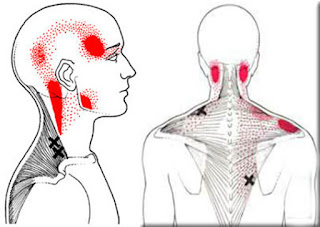
Cervicocephalic syndrome Introduction Cervicocephalic syndrome (CCS) includes pain and stiffness of the upper cervical spine with associated headache. The syndrome frequently demonstrates symptoms of dizziness and often visual (e.g. nystagmus) or auditory disturbances (e.g. tinnitus). This term is outdated and not commonly used in clinical practice, although it may still be used in some parts of the world. Definition / Description These symptoms may be related to vertebrobasilar insuffisiency where interference with the blood flow in the vertbral artery occurs when the neck is inclined to one side, rotated or extended. Clinically Relevant Anatomy The upper cervical complex consists of the atlanto - ocipital(jointC0-C1), the atlanto-axial (1joint-C2) and the superior aspect of C2. The vertebral arteries begin in the root of the neck. Usually the left artery is larger than th...

